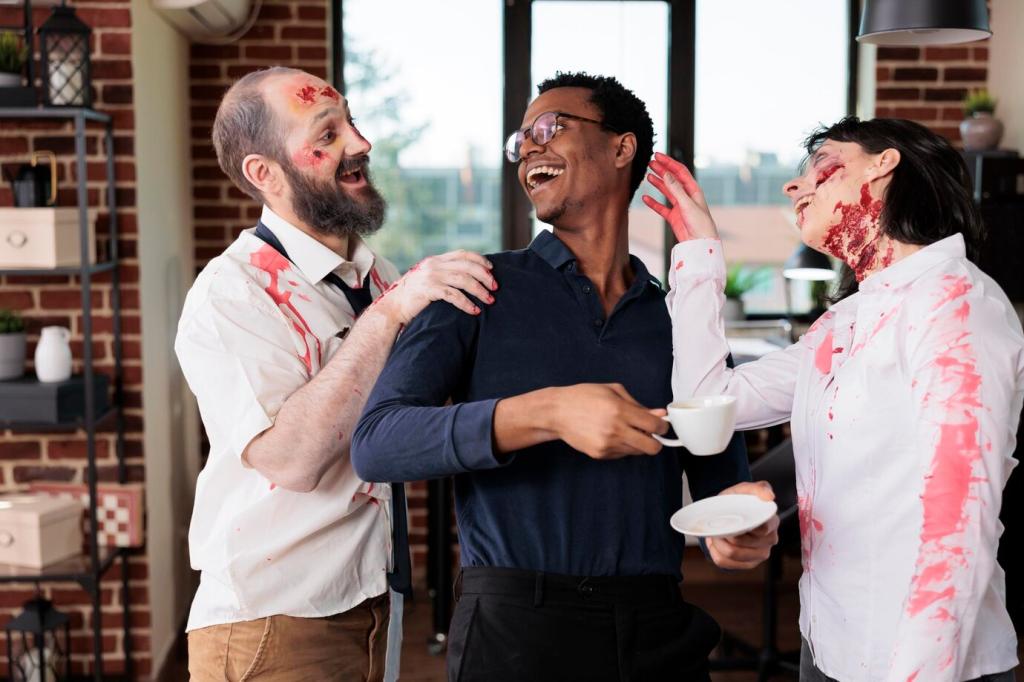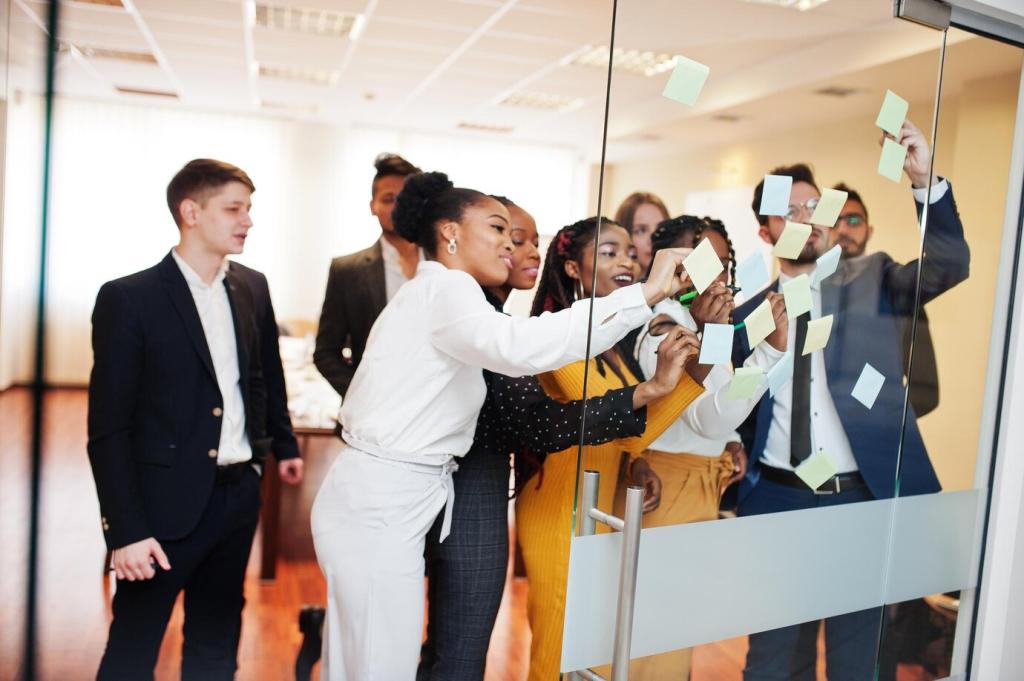Collaborative Problem Solving Activities: Build Momentum Together
The cognitive multiplier effect
When people co-create solutions, they surface diverse assumptions, test competing models, and refine ideas faster. The group’s collective working memory expands, enabling smarter trade-offs and fewer blind spots than any individual alone.
A short story of a campus water crisis simulation
Our student team faced a simulated pipeline failure. A skeptical engineer, a calm mediator, and a bold designer clashed, then converged. Rotating leadership unlocked an elegant rerouting plan that everyone trusted and executed.
Your turn: weigh in and connect
Tell us about a time collaboration changed an outcome in your classroom, studio, or sprint. Comment with the challenge, the turning point, and one facilitation move that made the breakthrough possible.

Set the Stage: Roles, Norms, and Tools
Psychological safety as the ground rule
Invite uncertainty, normalize revision, and forbid idea-shaming. Use a visible agreement: listen fully, build on ideas, critique kindly. Ask, “What did we miss?” to reward curiosity and reduce fear of being wrong.
Roles that rotate and reveal strengths
Assign facilitator, skeptic, mapper, summarizer, and timekeeper. Rotate each round to distribute power and empathy. Participants experience different lenses, improving their flexibility and respect for teammates’ cognitive contributions.
Toolkits that keep flow alive
Stock sticky notes, timers, index cards, and a roomy whiteboard. Digitally, try shared canvases and timers. The goal is lightweight structure that speeds iteration without boxing creativity into rigid, premature conclusions.
Quick-Start Activities to Spark Team Brains
Two Truths and a Task
Pairs share two true constraints and one made-up blocker about a simple design challenge. The group identifies the fiction and proposes a workaround. It’s playful, probing, and primes critical thinking without pressure.
Silent Squares
Teams receive puzzle pieces to form perfect squares, but speaking is not allowed. Trading only by gestures, they must notice patterns, share silently, and succeed together. Debrief emphasizes nonverbal cues and equitable contribution.
Constraint Sprint
Build the tallest freestanding structure using only string, tape, and ten straws within seven minutes. Constraints force creativity, and rapid prototyping encourages rethinking. Debrief questions surface how teams pivoted under pressure.
Deep-Dive Challenges with Powerful Debriefs
Marshmallow Tower 2.0 with stakeholder twists
Beyond height, assign stakeholders with competing needs: durability, beauty, and cost. Teams must negotiate criteria, document assumptions, and prototype. The marshmallow reveals hidden tensions, teaching alignment and evidence-based iteration.
Bridge the Gap: budgets and trade-offs
Given unequal budgets and materials, teams construct a bridge spanning two chairs. Surprise inspections change constraints mid-build. The real lesson emerges in prioritization, transparent trade-offs, and resilient communication under shifting realities.
Crisis Room: scenario planning under uncertainty
Simulate a sudden service outage with incomplete data. Teams create triage steps, communication plans, and decision rules. Random event cards complicate choices. Debrief explores heuristics, escalation thresholds, and learning from near misses.
Method Playbook: Structures That Guide Collaboration
Empathize quickly with user snapshots, define a crisp need statement, ideate widely, prototype lightly, and test honestly. Loop back rapidly. The cadence normalizes change and keeps teams solving the right problem.
Cycle hats: facts, feelings, risks, benefits, creativity, and process. Everyone wears the same hat together to avoid unproductive debate. This shared focus improves listening and reduces personality clashes during intense moments.
Capture problem, current state, root causes, countermeasures, and follow-up on a single page. The A3 invites shared ownership, makes assumptions inspectable, and anchors decisions in evidence instead of loudest voices.

Inclusion First: Every Voice Solves the Puzzle
Use timed rounds where each member speaks once before anyone speaks twice. Offer think-write-share to protect reflective processors. This rhythm prevents dominance spirals and surfaces ideas that would otherwise remain hidden.
Reflect, Measure, and Celebrate Learning
Debrief questions that matter
Ask: What surprised us? Where did we get stuck? Which assumption changed? What helped momentum? These questions transform noise into insight and build a team vocabulary for future collaborative problem solving activities.


Rubrics for process excellence
Score collaboration behaviors: listening, evidence use, role rotation, iteration, and respectful challenge. Share criteria before starting. The clarity encourages purposeful participation and demystifies what great teamwork actually looks like.
Remote and Hybrid: Distance Without Disconnection
Use shared whiteboards, timers, and sticky-note templates. Keep bandwidth-light options handy. Visual anchors reduce confusion, and simple controls let facilitation stay focused on people rather than troubleshooting technology.
Remote and Hybrid: Distance Without Disconnection
Provide a clearly scoped task, visible roles, and time checks at intervals. Ask rooms to return with a single slide artifact. This structure prevents drift and supports balanced participation across distributed teams.


Join our mailing list
